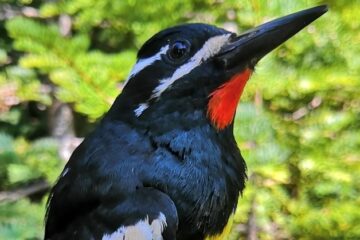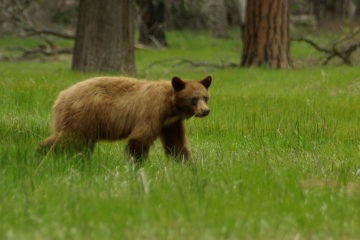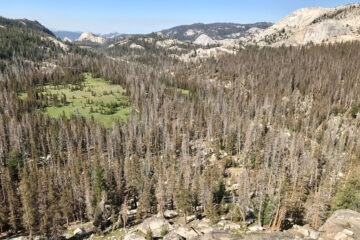Your gifts made a big difference in Yosemite in 2017 — so big that we’re still tallying up the impact of your support! Before last year gets too far behind us, we’re taking a quick tour through some of the many ways you helped the park, as donors, volunteers, program participants and more. Here’s our highlight reel (for now), by the numbers:
• Hundreds of thousands of people connected with the Conservancy in Yosemite (and simultaneously supported the park!) by participating in our adventure, art and theater programs; shopping in our stores; taking advantage of wilderness services, including bear-canister rentals; and volunteering. Our more than 200 volunteers, in turn, provided over $400,000 in donated labor to help the park, and interacted with nearly half a million visitors.
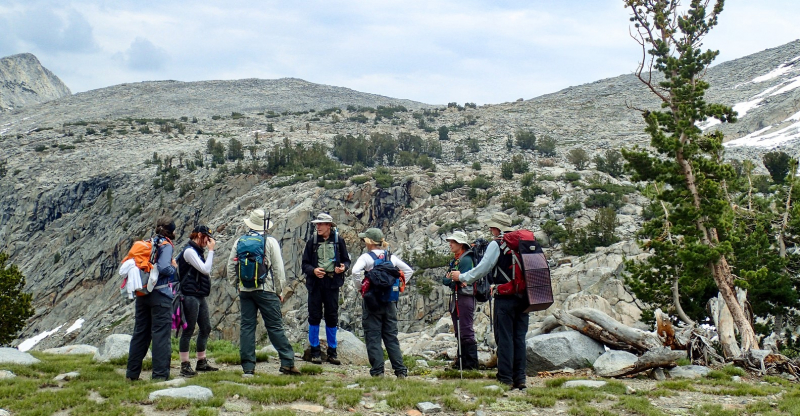
Our naturalist guides led 225 adventure experiences in 2017, including backpacking trips to remote parts of the Sierra. Thanks to everyone who supported Yosemite by participating in our programs in the park last year! Photo: Roy Williams Photography.
• Eight publications joined our lineup, including six new books covering topics such as sequoias, Search and Rescue, views of the park after dark, and tales for Yosemite’s youngest fans. Toward the end of the year, two of those titles (Big Walls, Swift Waters and Where’s Rodney?) were honored with national awards. As with all of our products, proceeds from our books and calendars support the park!
• Donor-supported crews, including California Conservation Corps members, worked on more than 90 miles of trails throughout the park, from Yosemite Valley and Hetch Hetchy to the remote backcountry.
In Lyell Canyon, trail and habitat crews joined forces once again to continue creating a more environmentally sustainable route for a segment of the popular John Muir Trail. By the end of the season, they had added more than 1,300 feet of rerouted trail and 84,000 square feet of rehabilitated meadow to the long-running project’s stats. (Since 2013, crews have built 1.6 miles of the “new” JMT, and their restoration work has helped enhance about 26 acres of watershed area.
• Bearing binoculars, notebooks and plenty of patience, avian aficionados spent hundreds of hours searching burned and unburned forests for signs of rare owls, coming up with, among other clues, more than 300 great gray owl feathers and 14 spotted owl nests.
• Survey teams taking stock of the diverse flora and fauna in Ackerson Meadow studied more than 1,200 individual songbirds; detected four owl species; used remote cameras to capture more than 10,000 images of animals in action; identified 37 acres of rare plants, including two monkeyflower varieties; and used echolocation recording software to capture subtle sounds from 654 bat crossings.
• Restoration staff, interns and volunteers (including a Student Conservation Association crew) helped “Keep It Wild“ in the backcountry by surveying more than 6,935 wilderness acres; removing 163 inappropriately located campsites (and maintaining another 118, to prevent them from getting too big); and treating 11 acres of invasive plants.
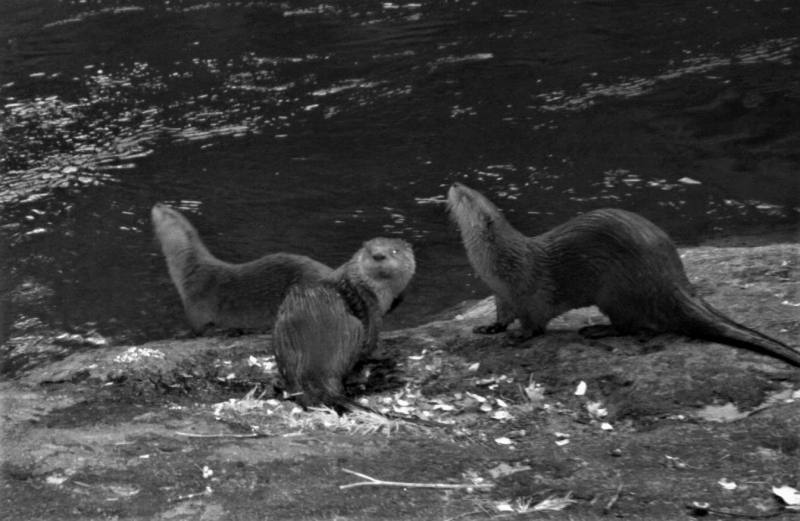
A trio of river otters, revealed in an image from a remote camera in Yosemite Valley. Photo: NPS
• Biologists used motion-activated cameras to detect river otters — a notoriously elusive species — at four sites in Yosemite Valley, gathering important observations to inform ongoing efforts to restore populations of native frogs and turtles along the Merced River. Meanwhile, at higher elevations, scientists moved 90 endangered Sierra Nevada yellow-legged frogs to new homes in Yosemite’s mountain lakes.
• The five 2017 Yosemite Climber Stewards helped run the annual Ask a Climber program in El Capitan Meadow, which tallied a total of 27,000 visitor contacts over its 150-day season.
When not answering people’s questions about big-wall climbing, the stewards headed to the granite — they collectively climbed more than 500 pitches, removed more than 2,100 feet of abandoned rope from the rocks, and led projects to restore 1,000 feet of approach/descent trails near popular routes.
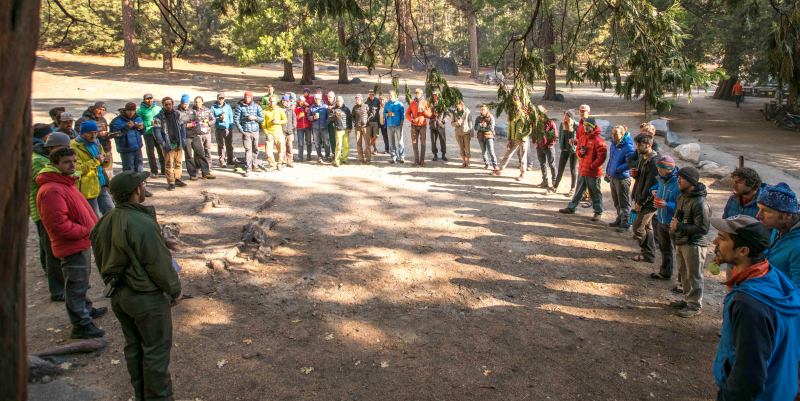
On top of all their other responsibilities, Climber Stewards lead weekly “Climber Coffee” gatherings in Yosemite Valley. Photo: Courtesy of NPS.
• Speaking of visitor contacts … Yosemite’s Preventive Search and Rescue (PSAR) interns and volunteers connected with visitors more than 70,000 times in 2017, sharing critical information about seasonal hazards, such as water crossings and late-season snow, and perennial safety tips — stay hydrated, avoid slippery boulders, carry a headlamp, and so on. When a record winter resulted in high, fast-moving water throughout the park, the team helped hold a special Swift Water Safety Day before the busy Memorial Day weekend.
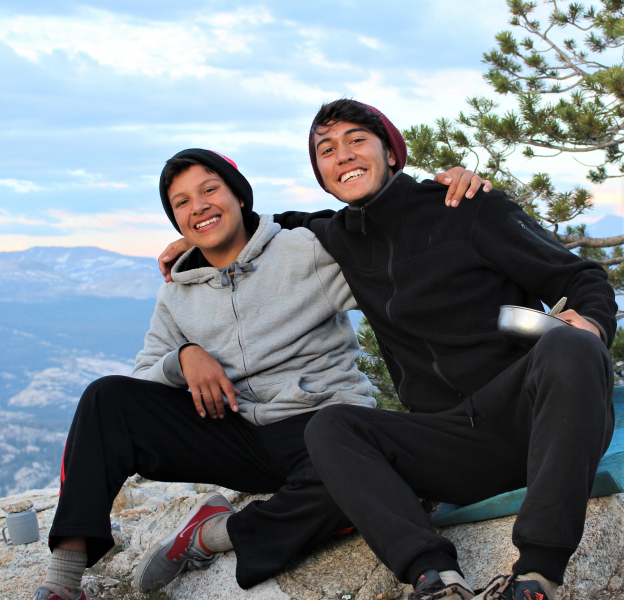
Joel and Jonathan, participants in the 2017 Adventure Risk Challenge summer course, enjoyed a break from hiking on an expedition to Ten Lakes. Photo: ARC
• Youth in Yosemite Programs brought kids, teens and young adults to the park throughout the year. Tens of thousands of junior rangers earned their Yosemite badges while pledging to explore, learn about and protect the natural world. Middle- and high-school students immersed in the park on camping and backpacking trips with Parks in Focus, Adventure Risk Challenge and WildLink, programs that help youth from California communities experience a national park, often for the first time.
Meanwhile, 11 student rangers based at the UC Merced Wilderness Education Center (WEC) led 31 field trips to Yosemite in 2017. Students in the campus-based Yosemite Leadership Program (YLP), which is closely linked to the WEC, delved into their 64-week stewardship-focused curriculum and completed six capstone projects, which included restoring a Mariposa County meadow and helping high school students build wilderness skills.
Over the summer, 16 YLP interns worked with staff across 12 NPS branches (and the Conservancy — remember Lora, our amazing art programs intern?). In addition to gaining valuable career exposure and experience, the interns created tangible resources for the park, including a field guide for bird-banding, a youth art resource manual, an educational video about fire management, and a map of climbing routes to support Search and Rescue efforts. Along the way, they found time to mentor 135 other students, including many who were participating in other donor-supported youth programs!
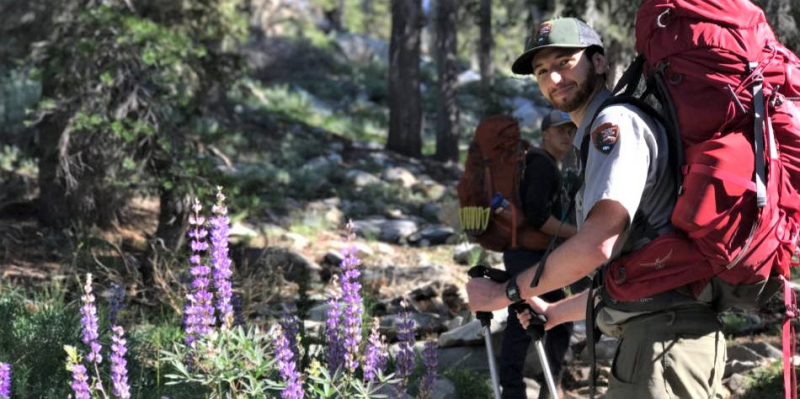
Wilderness Education Center student ranger Rob led a group of incoming UC Merced freshmen on a backpacking trip in Yosemite. Photo: NPS
Check out our November 2017 Giving Thanks post for a few more highlights from last year, and keep following the blog to stay in the loop on how you can make a difference in Yosemite in 2018. From all of us at the Conservancy, thank you for your continued support!
Main image: A zoomed-in view of climbers on El Capitan, thanks to the “Ask a Climber” telescopes. Photo: RV Project/Spenser Tang-Smith

